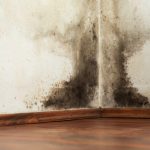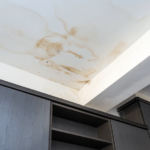Water leakage can be a huge problem for homeowners. If not handled properly, it can lead to extensive and costly water damage. This blog post will provide you with information on how to handle water leakage in your home and cover topics such as where the water is coming from, what to do if you see water damage, and how to prevent water damage in the future.
1) Find the source
If you see water damage, the first thing you should do is identify the source of the leak. This can be difficult, as leaks can often be hidden. Next, check for any obvious signs of water damage, such as stains on walls or ceilings or pooled water on floors. If you cannot find the source of the leak, call a professional to help you locate it. Also, keep in mind that water damage can often be hidden behind walls or under floors, so even if you don’t see any signs of water damage, it’s still essential to check for leaks.
2) Stop the water
Once you have located the source of the leak, it is vital to stop the flow of water. If the leak is coming from a broken pipe, you will need to turn off the water to that area of your home. This can usually be done by shutting off the main water valve. If you are not sure where your main water valve is, call a professional to help you locate it. Once you have turned off the water, it’s important to repair the leak as soon as possible.
If the leak is coming from an appliance or fixture, such as a toilet or sink, you will need to turn off the water supply to that appliance or fixture. Again, if you are not sure how to do this, call a professional.
3) Clean up the water damage
Once you have stopped the flow of water, it is time to start cleaning up the water damage. Depending on the extent of the damage, this may be a simple process, or it may be more complicated. If the water damage is extensive, you may need to call a professional to help you clean up and repair the damage.
If the water damage is minor, you can probably handle the cleanup yourself. Start by removing any wet or damaged items from the area. This includes carpeting, furniture, electronics, and anything else that has been soaked by water. Next, use a wet/dry vacuum to remove as much water as possible from carpets and floors.
Once the area is dry, you can start repairing any damage that has been done. If the water damage was minor, this might be a simple process of patching holes and drying out wet materials. However, if the damage is more extensive, you may need to call water damage restoration services to help you repair the damage.
4) Prevent future water damage
Once you have repaired the water damage, it is important to take steps to prevent future water damage. One of the best ways to do this is to find and fix any leaks in your home. This may require hiring a professional, but it is worth it to prevent further damage.
In conclusion, water damage can be a serious problem. However, by following these steps, you can handle water damage in your home and prevent further damage.







